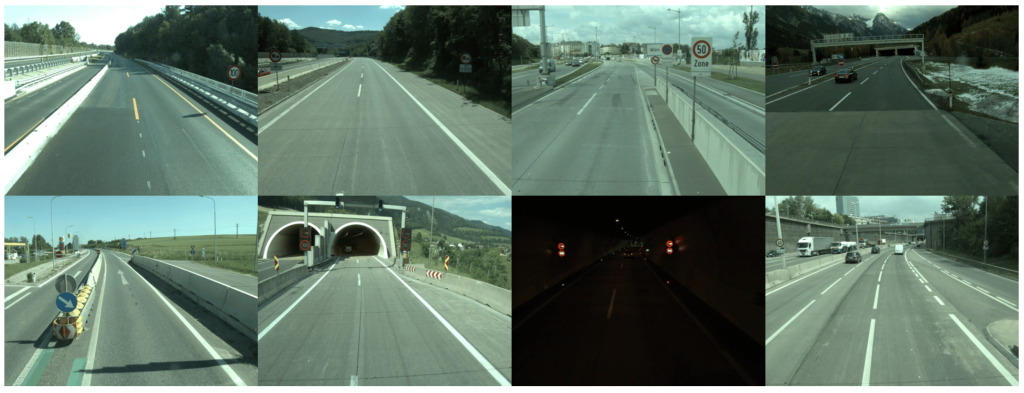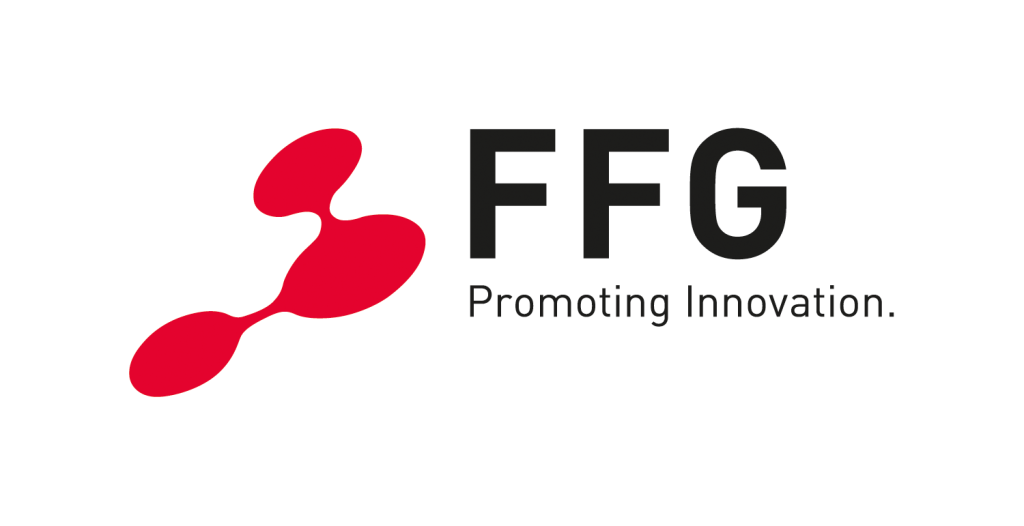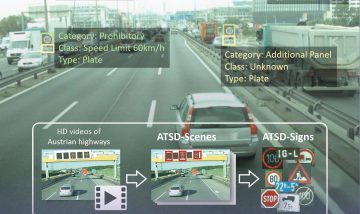SafeSign – The safe traffic sign 4.1
The aim of SafeSign is to increase confidence in driver assistance systems.
How artificial intelligence sees a traffic sign
The increasing use of automated systems on the road, such as advanced driver assistance systems and autonomous vehicles, requires that traffic signs are perceived with high accuracy. Especially during the transition phase from human to fully automated systems, the mixed use of road infrastructure poses risks. A different interpretation of traffic signs by humans and machines can lead to severe safety issues.
In this project, we therefore investigate the influence of disturbances on deep learning-based traffic sign classification systems. Humans usually cannot judge whether an AI can correctly interpret a traffic sign. For example, consider a driver approaching a tunnel: a variable LED traffic sign clearly shows “STOP” due to an incident. The human driver stops the car. However, disturbances such as snow, ice, fog, or even defective LEDs may cause the automated system of a following vehicle to misinterpret or ignore the sign, which could lead to a crash.
Improving Robustness and Interpretability
In order to build trust in future mixed usage situations, we combine and develop methods that improve both the robustness and interpretability of deep learning. Furthermore, we evaluate these methods on real images of traffic signs, both with and without disturbances, as well as on synthetically generated data. All technical methods and concepts are continuously reviewed with respect to ethical principles.
The main project results, such as prototypical deep learning models and a comprehensive database of disturbed traffic sign images, will be made publicly available. Consequently, Austrian companies in the fields of mobility, road infrastructure, and autonomous driving will be able to base further research and development projects on these results. In particular, we expect that the outcomes will provide guidance for the design of future traffic signs that are readable for both humans and machines.
Research that consistently follows ethical principles and guidelines will increase trust in AI systems and foster their social acceptance. This is particularly important for safety-relevant areas, such as traffic, where reliability is paramount.


AI-based pipeline for traffic sign detection and classification

Development of ATSD. 7555 frames containing traffic signs were extracted from HD videos and then annotated. After filtering invalid images, the remaining 7454 frames were then split into training, test and internal sets, forming ATSD-Scenes. ATSD-Signs consists of traffic sign patches extracted from the frames in the respective splits.

Some example scenes of ATSD, highlighting the diversity of the data set. It covers rural, urban and mountainous areas, and lots of tunnels.
This project is funded by the FFG.

Project partners


Details zum Projekt
- Project short title: SafeSign
- Project long title:: Das sichere Verkehrszeichen 4.1
- Project partners:
- RISC Software GmbH (Konsortialführung)
- Autobahnen- und Schnellstraßen-Finanzierungs-Aktiengesellschaft (ASFINAG)
- Johannes Kepler Universität Linz, Institut für Strafrechtswissenschaften, Abteilung für Praxis der Strafrechtswissenschaften und Medizinstrafrecht, Abteilung für Unternehmensstrafrecht und Strafrechtspraxis
- Funding call: Ideen Lab 4.0 (2019) (FFG)
- Total budget: 236 TEUR
- tereof funding: 172 TEUR
- Duration: 03/2020-08/2021 (18 months)
Contact person
Project management

Dr. Stefan Thumfart
Project Manager & Senior Researcher
Exponat: Crash me if you can
Manipulate Traffic Signs to fool AI-controlled Slot Cars
Current vehicles use artificial intelligence (AI) to recognize traffic signs in order to inform drivers or adjust the speed of the vehicle. We often blindly trust these systems — but what are the limits of machine perception? In Crash Me If You Can we playfully get to the bottom of this question. Visitors have the opportunity to manipulate traffic signs in such a way that they are no longer correctly recognized by the AI. If a speed limit on the miniature racetrack is recognized incorrectly, the racing car flies out of the curve.
RISC Software GmbH is dealing with these and other issues relating to traffic sign recognition by AI in the ”SafeSign” research project. This is being funded by the Austrian Research Promotion Agency (FFG) as part of the Ideas Lab 4.0 program. The AI research is supported by funds from the strategic economic and research program ”Innovative Upper Austria 2020” organized by the state of Upper Austria.
The exhibit was already on display at the Ars Electronica Festival 2021 and the Long Night of Research 2022.








